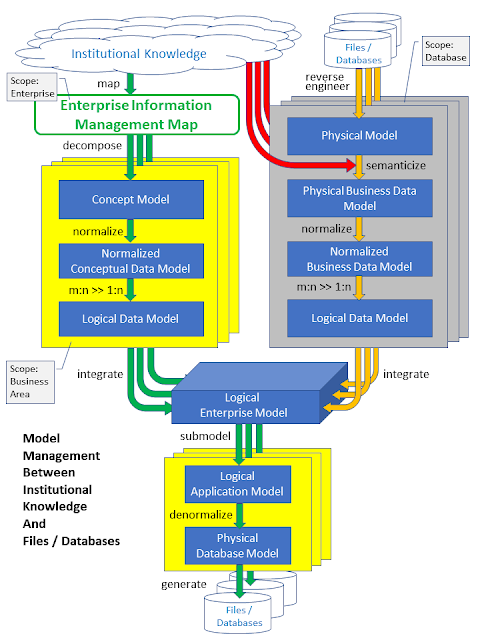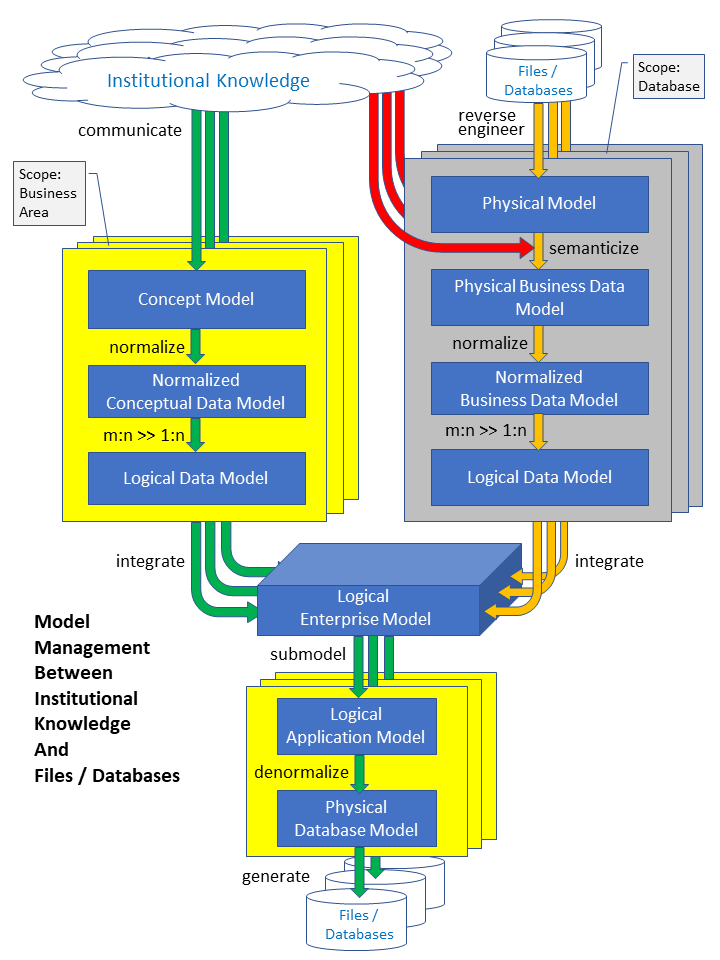In my previous post "Managing Data Models" I emphasized the Logical Enterprise Model as the center piece of model management.
Since the Logical Enterprise Model builds over time, a CDO suggested to me that she would like to integrate a “Corporate Map” into the model management process. This map would be developed in moderated sessions with C-suite members to provide guidance to corporate leaders and stakeholders how business areas are related, which Data Strategy to choose and which projects to prioritize.
Our conversation brought us quickly to what I introduced as an “Enterprise
Information Management Map” in my past posts using an example for
the insurance industry:
Adding the development of an Enterprise Information Management Map to the model management process for a
more business-driven top-down approach:


